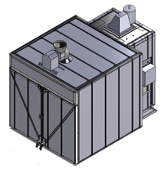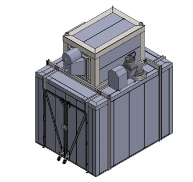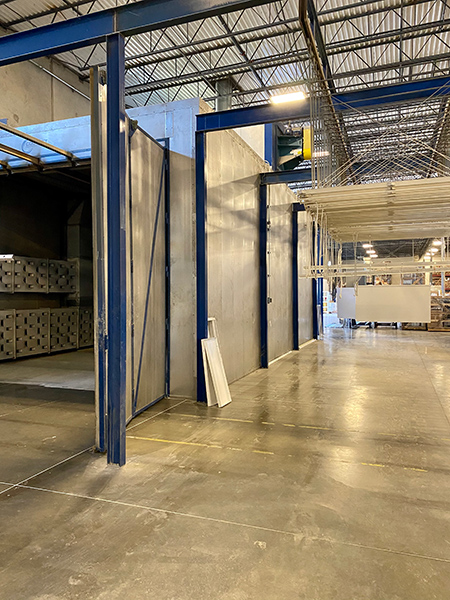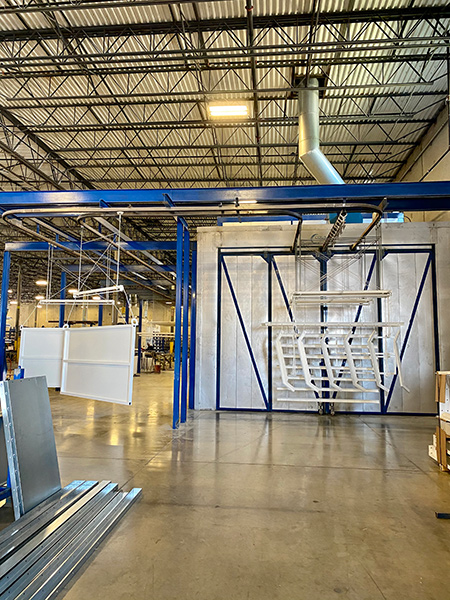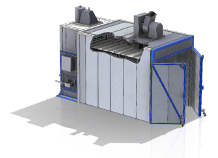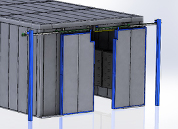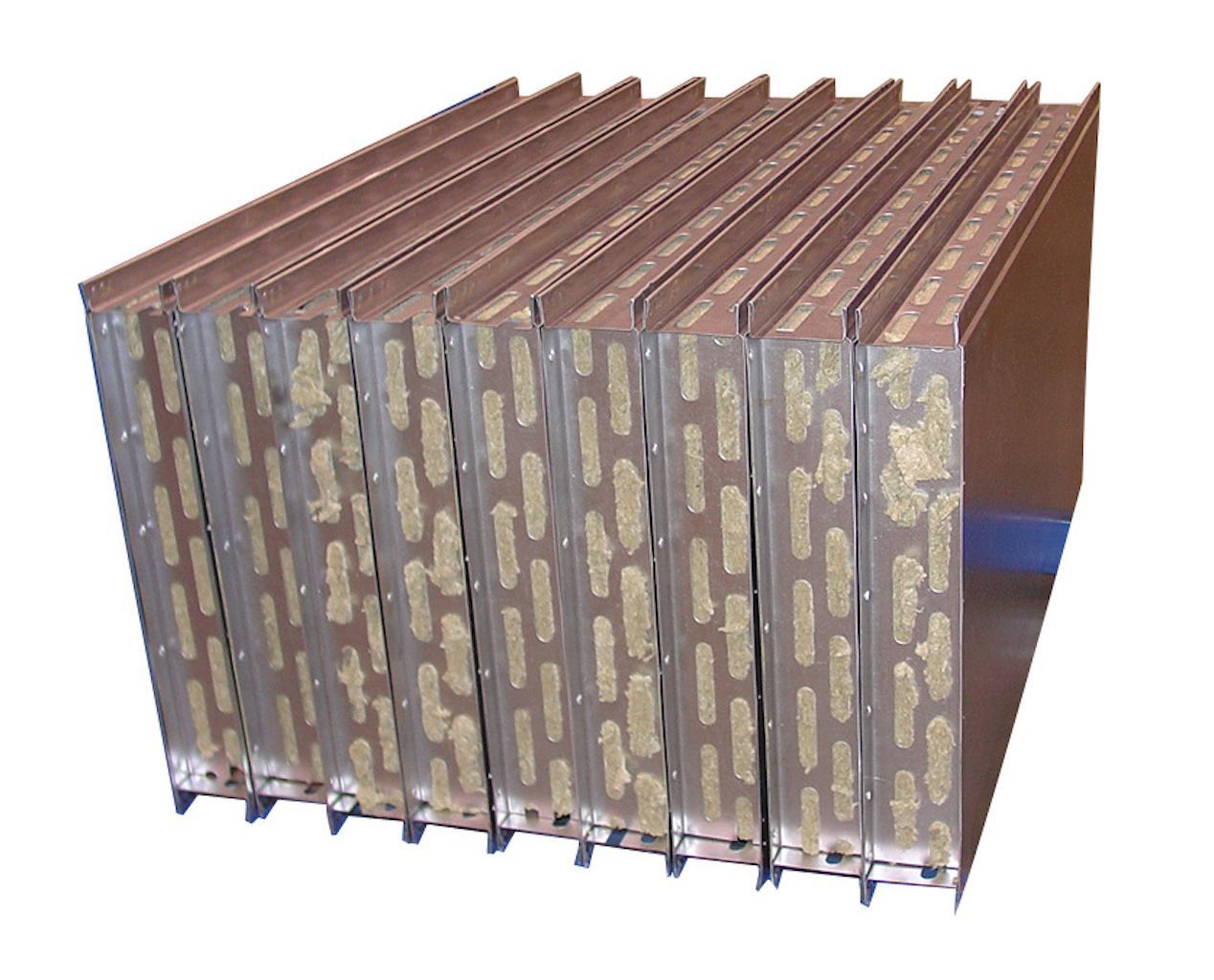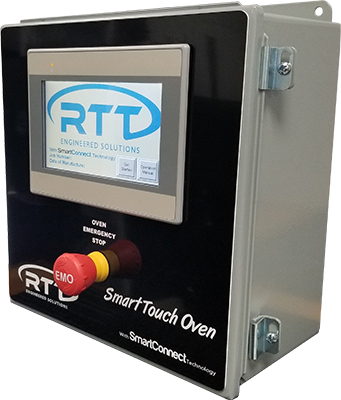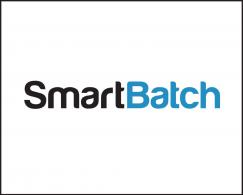Understanding the key elements of a batch oven will assist in selecting the right oven for your application and is important to the quality and performance of your system.
Ovens are an important part of any finishing operation. Batch ovens are typically used for curing “batches” of parts, just as the name implies. They provide a simple, less complex solution for curing when low volume production is the norm. Batch ovens can be provided in a wide range of sizes and configuration based on part size, configuration and material handling needs.
The basic elements of an oven, which need to be considered before purchasing are; oven size, floor space available, internal air flow design, operating temperature, heating capacity (design BTU), fuel type, door configuration and type, part conveyance, oven construction and oven controls.
The size of the oven is dictated by the largest size part or cart (which may hold multiple pieces) with additional clearance above and along the sides. Generally, it is recommended to allow 18 – 24 inches from the ceiling or wall mounted duct work where the heated air is introduced to the parts to allow for proper airflow without disrupting the deposited coating.
Once the size of the oven is determined, you must assess the available floor space. The design and location of the duct work / airflow in the oven will have an impact on overall oven size. Ultimately, part configuration and size will dictate the airflow design in the oven. The more complex and geometric the parts the more important the air flow will be.
The next item to consider is the operating temperature of the oven which is based on the coatings that are being cured. Most commonly this will be in the range of 180 – 450°F.
Most coating companies will specify the time at temperature by which their coatings must be properly cured. This requirement most commonly refers to the surface temperature of the part, not the air temperature of the oven. For example, a lightweight sheet metal part will quickly reach the oven set point temperature whereas a large cast iron part will take much longer to reach “surface temperature”.
Not Sure What yOU Need?
Have questions or need help in choosing the right Batch Oven for your needs? Reach out and we will be happy to assist you.
When purchasing an oven, it is critical to identify the composition and total mass of the product that will be cured, taking into account any carts or racks that will be used for part handling. This allows the RTT engineering team to properly size the oven burner and internal airflow design so that proper curing can be achieved with minimal batch time consumed.
Part conveyance into the oven can be done manually by cart or with more complexity using a floor track or conveyor. The ovens doors are typically determined by part conveyance, floor space or part size and configuration. The solid hinged double door is the basic standard if space is not an issue.
When floor space is at a premium or adding an oven to an existing floor plan with minimal room for growth, the bi-fold swing door or a sliding door is a great option. When the parts are conveyed into the oven by cart or floor conveyor or if space is limited, a fabric insulated roll-up door can also be used. Ovens can be designed for single entry or a pass-through oven can be provided with doors at both ends to aid in workflow through the finishing operation.
Depending on the size of the batch oven, they can be provided pre-assembled or constructed onsite. The oven is comprised of a series of interlocking oven panels with the thickness dependent on the operating temperature. Panels are offered in 2” (160 – 200°F), 4” (200 – 450°F) and 6” (450°F) thicknesses.
All RTT oven panels are factory built with mineral wool insulation in place eliminating the need for onsite assembly of the panels. In addition to the oven panels, the burner box is also provided pre-assembled and is tested prior to shipment.
The oven controls are an often overlooked but very integral part of the oven. RTT provides a simple to use touchscreen interface designed to be user-friendly minimizing the need for training when there’s a change in operators. RTT controls are PLC based for maximum flexibility and have expandable inputs and outputs, Ethernet communication is available for remote monitoring or control.
The controls include programmable recipes with batch timers, built-in hour meter to simplify oven maintenance and troubleshooting. The standard RTT touchscreen comes in 4.3” but is also available in 7” or 15” screens.
Customers that are looking for even more insight and control into their batch ovens; RTT has developed the SmartConnect and SmartBatch technologies.
The SmartConnect system is an application for you computer or smart phone that can help create visibility into the performance of your batch oven as well as your process. The ability to email user defined groups of alerts, status and performance is a huge benefit as well as potential cost savings for the customer.
The SmartBatch (patent pending) system allows for visibility into each parts or product cure time as related to actual part temperatures. Powder manufactures require the substrate temperature to be at a certain setpoint for a determined amount of time to ensure a proper cure, but when it comes to different material thicknesses this can be tricky to accomplish with a standard data recording device.
The SmartBatch system not only provides the ability to run different part profiles and view the performance in real time, it eliminates the need to run sample batches to get the data required to adjust the oven batch time or temperature setpoint.
For more information or assistance in specifying your RTT batch oven design, please contact your local RTT Distributor or contact us direct via email at sales@rttsolutions.com or via phone 888-452-6684.

